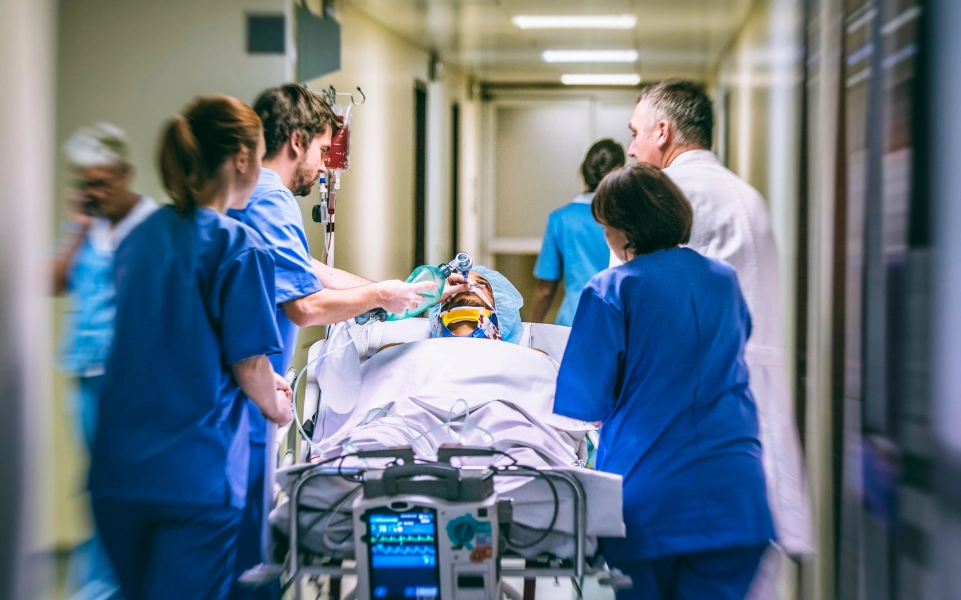Emergency Services

Emergency services at Medisuktam means rapid response, 24/7 availability, specialized medical teams, trauma care, diagnostic capabilities, emergency medical transportation, triage system, coordination with specialties, community education, preparedness, and continuous training and drills.
MediSuktam is diligently working towards the incorporation of advanced AI-driven triage systems, telemedicine for immediate expert consultation, and robotics-assisted emergency procedures.
Emergency Services Offer:
- AI-assisted triage for efficient patient prioritization
- Telemedicine access for immediate specialist consultations
- Robotics-enhanced emergency medical procedures
- State-of-the-art resuscitation and life-support equipment
- Fast-track systems for critical care situations
- Integrated emergency response with pre-hospital care
Future of Emergency Services is at MediSuktam:
- Expert team trained in advanced emergency protocols
- Utilization of cutting-edge technology in urgent care
- Rapid and accurate diagnosis during critical situations
- High success rates in life-saving emergency interventions
- Collaborative approach to emergency care and rescue
- Ongoing advancements in emergency medical procedures
Why Dental Fillings Are Important
Patients often experience tooth decay because of inappropriate nutritional habits, poor oral care at home or genetics leading to many cavities. Before creating a treatment plan, the dental professional will extensively review the patient’s medical history and their daily routine in efforts to detect any underlying issues such as medical ailments that may be the reason for exaggerated decay formation. According to collected information, a proper course of treatment is chosen including suitable dental materials most beneficial to the individual needs of each patient.
The Procedure of Tooth Filling
Although each procedure varies subtly, there are some basic guidelines to treat cavities, and they are followed by all dental professionals.
- The patient is anesthetized using local anesthesia such as Carbocaine for short procedures, Lidocaine for medium length sessions, and Marcaine for multiple fillings. Patients with feelings of anxiety may be offered Nitrous Oxide (laughing gas) for the duration of the treatment. Only in extreme cases, the patient is given IV sedation or general anesthesia and may be referred to a more suitable dental setting such as a hospital.
- The area to be treated is secured by latex sheet that protects the tooth and keeps it dry during the procedure. It also prevents the debris from entering the oral region keeping the patient comfortable. For multiple fillings, when the treatment may require extended period of time, a bite block is used to help the patient keep their mouth open in a relaxed position without any strain on the jaw muscles.
- In case of composite fillings, the shade is chosen to closely mimic the appearance of the surrounding dentition.
- The decay is removed using a high-speed handpiece, slow-speed handpiece, laser or the combination of all three devices. The prepared surface may be etched with an appropriate solution to remove any remaining bacteria and create a porous layer for adhesive purposes. Amalgam or resin material is placed in small increments using hand instruments. The biting surface is then checked and adjusted as necessary.
Filling placement is necessary to treat cavities and prolong the longevity of the natural teeth. With today’s technology continuously improving, new methods are developed to benefit the patients and ensure their positive oral health for a lifetime.
Contact Info
-
Phone: +91-9899884800,
+91-11-46577462
Working Time
- OPD- Monday to Saturday (8:00am- 9:00pm)
Emergency- 24/7
